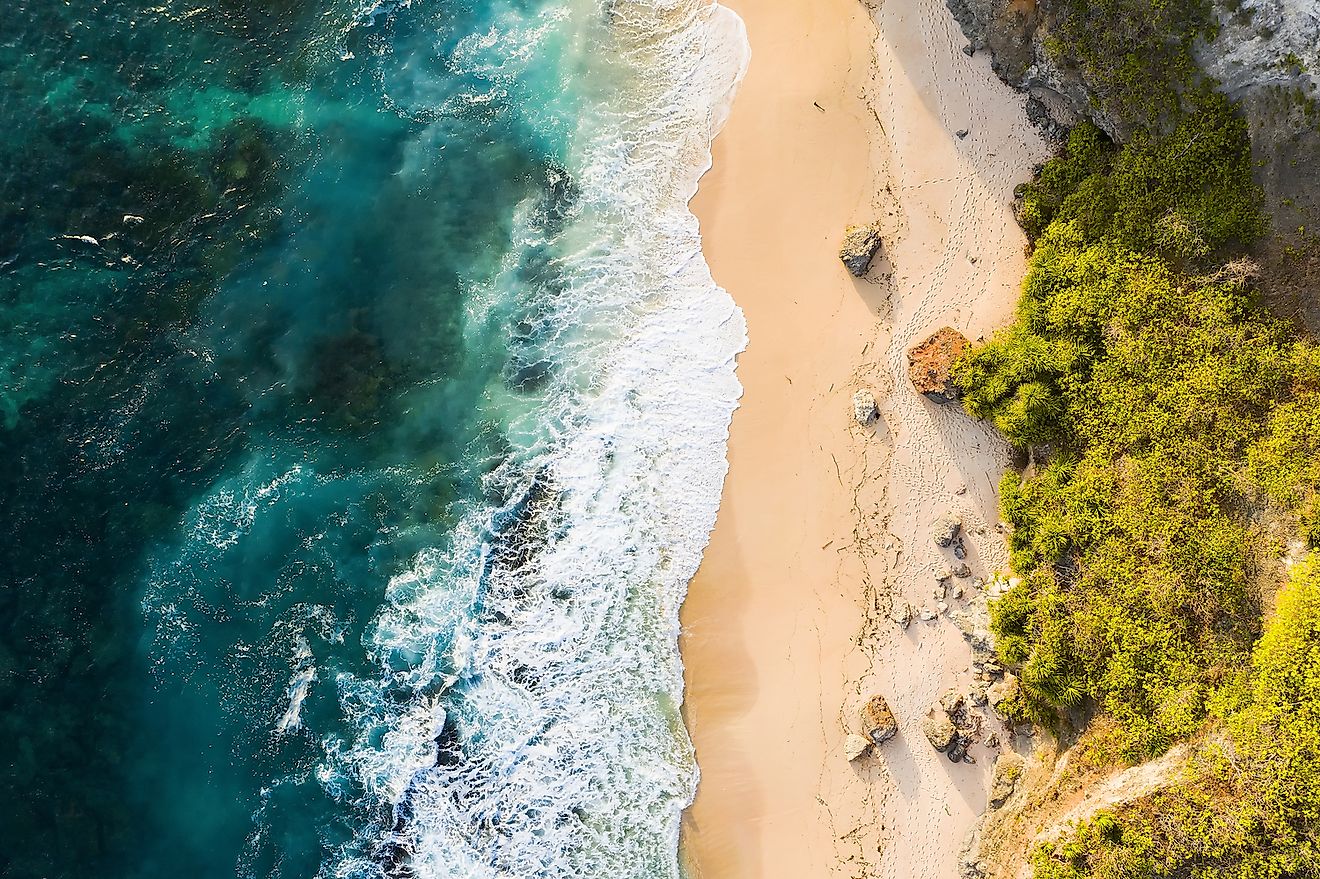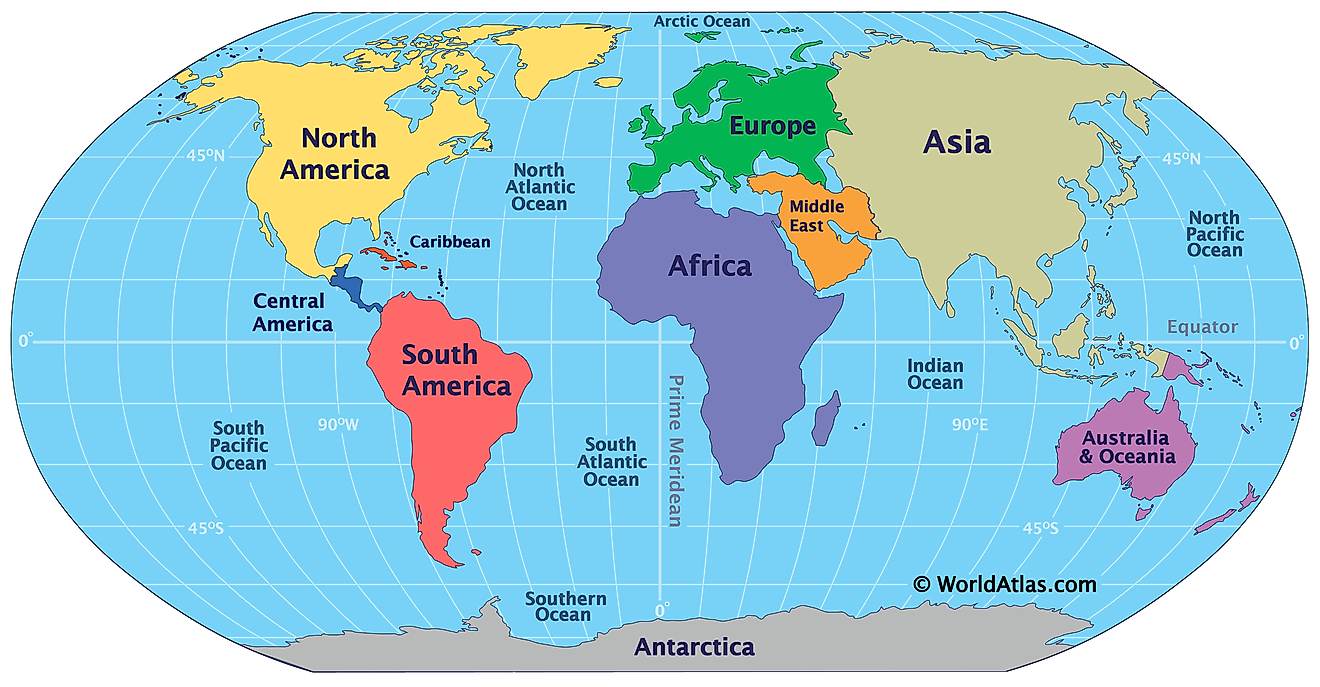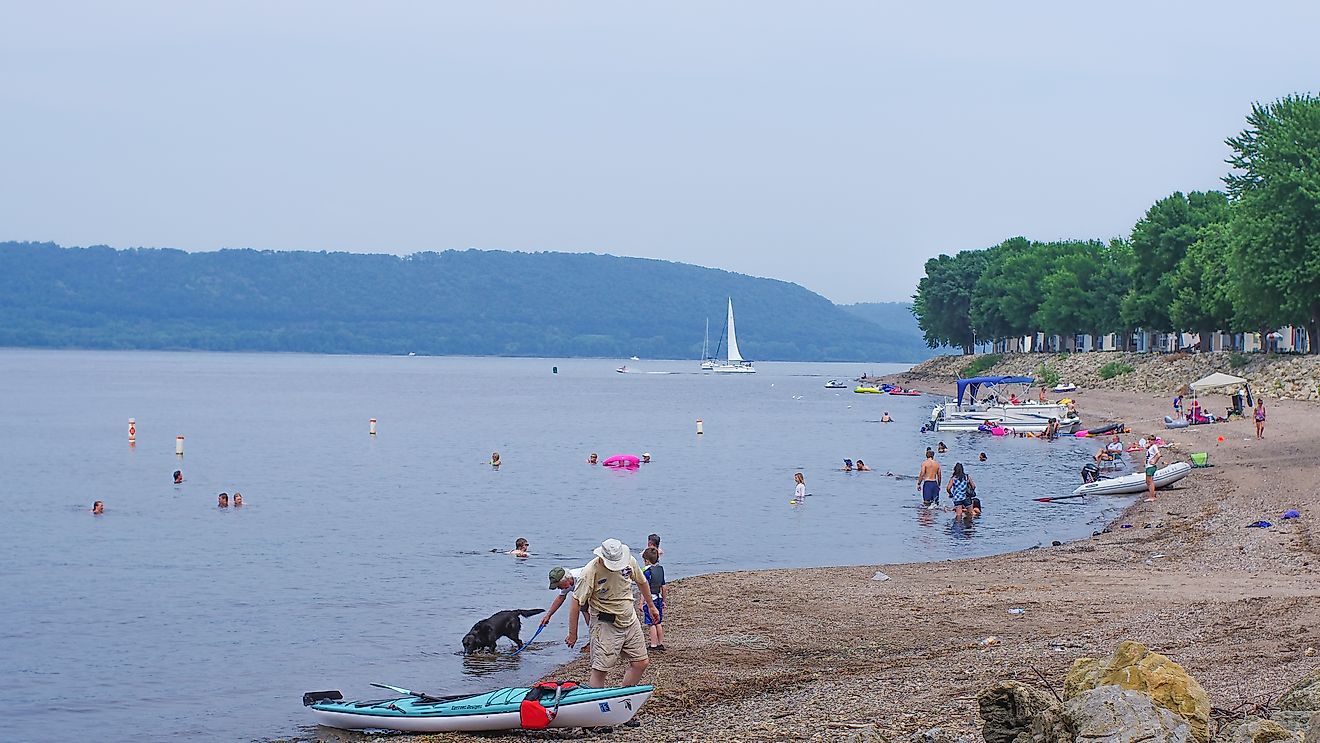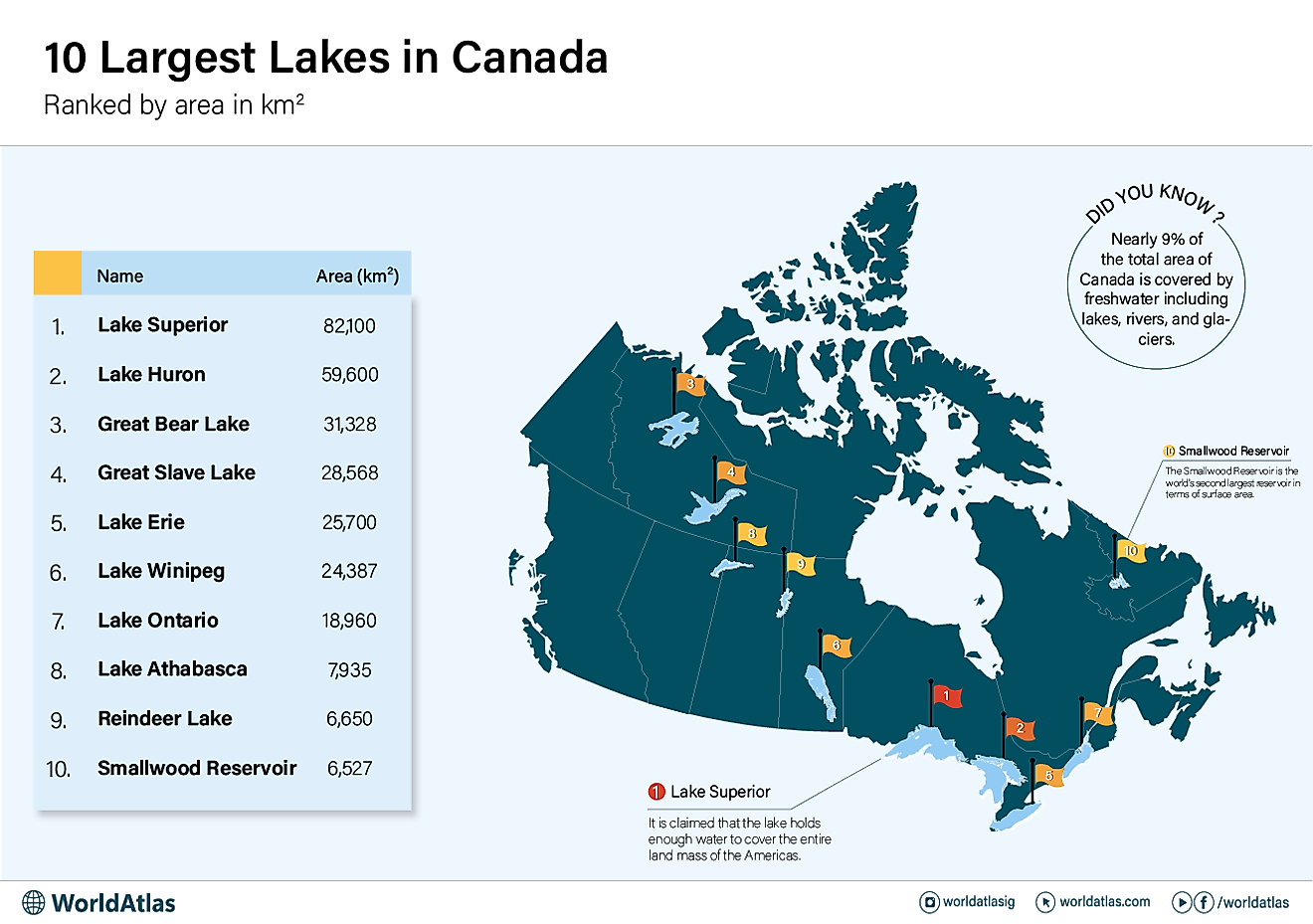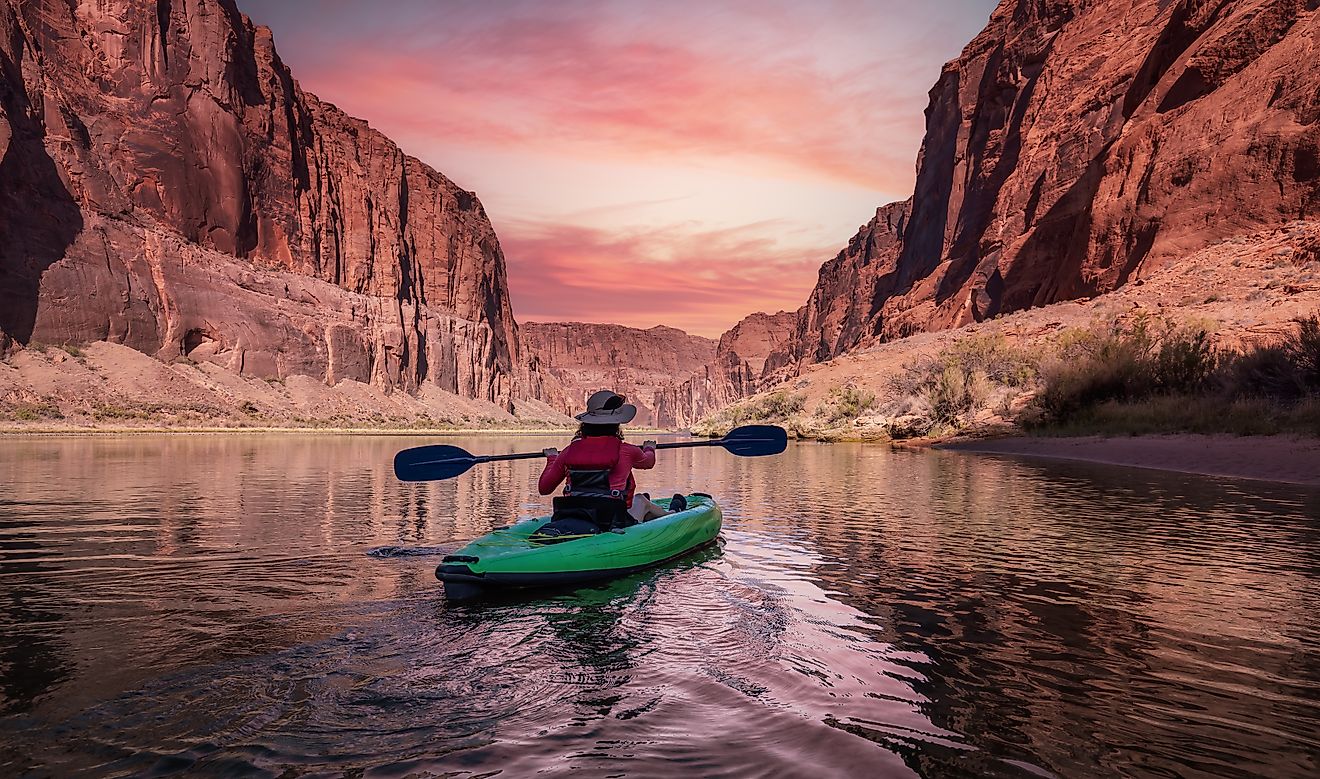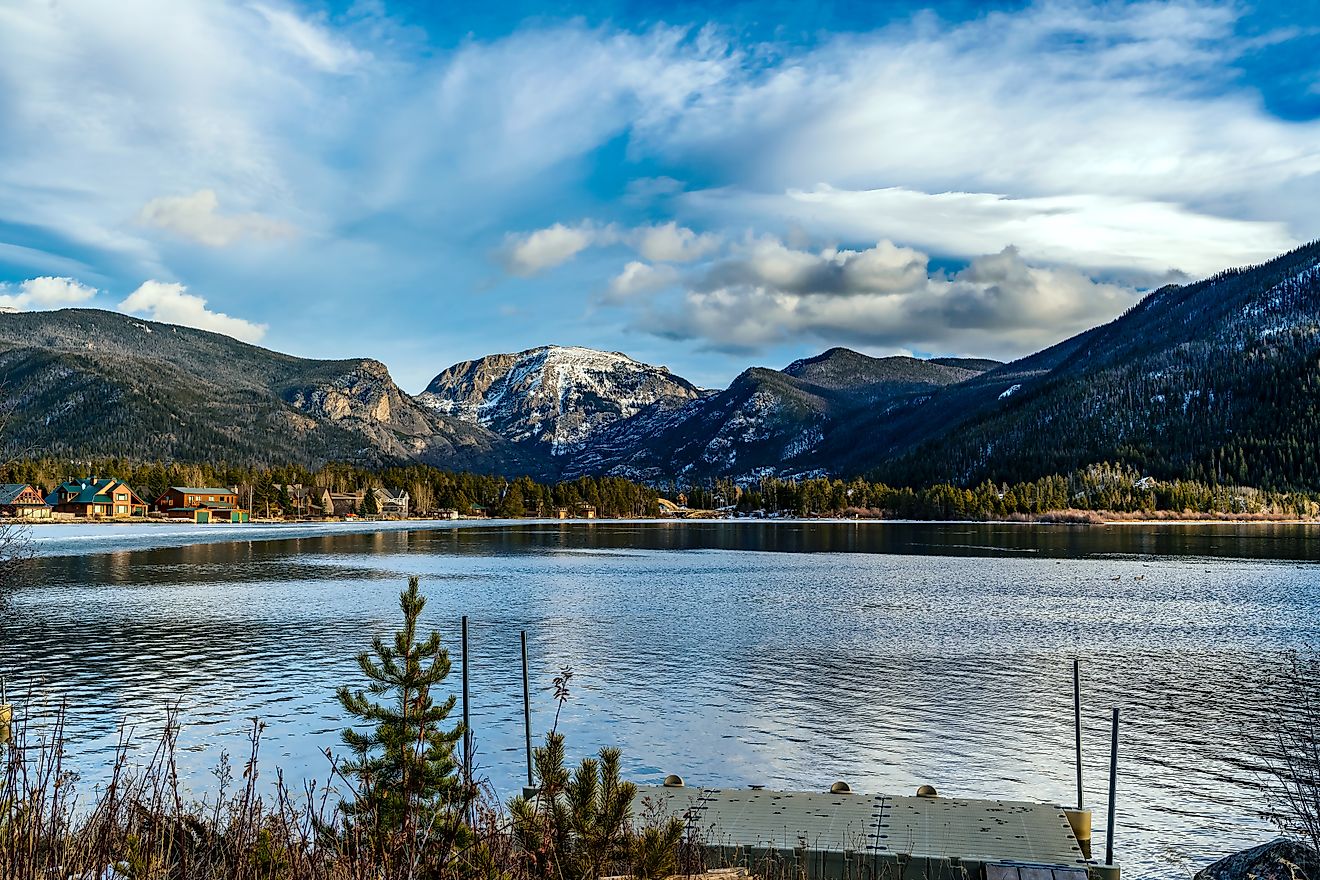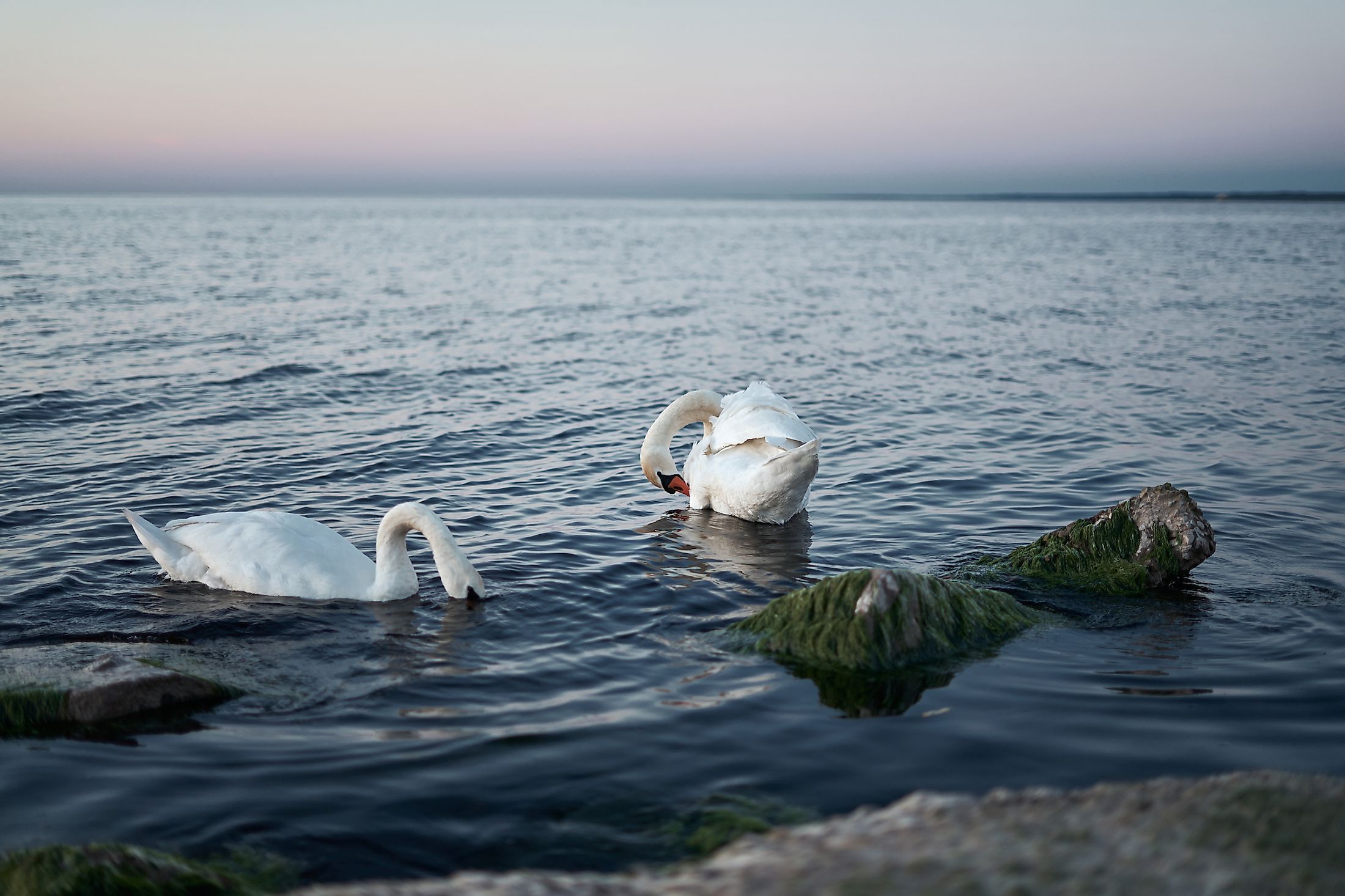
Lake Stratification
There are many different types of lakes in all different shapes, sizes, compositions and types. Lakes can be fresh water or saline, free flowing or stagnant, and occur in various different areas all over the world. When studying lakes, it can be helpful to break down different sections of that body of water, and understand the way in which the lake itself functions. There are a series of classifications within a lake which can be used to further understand the inner workings of these types of bodies of water.
Lake Zones
Firstly, there are four different types of lake zones. These zones divide the body of water into different sections, depending on depth. The four lake zones are littoral, limnetic, profundal, and benthic.
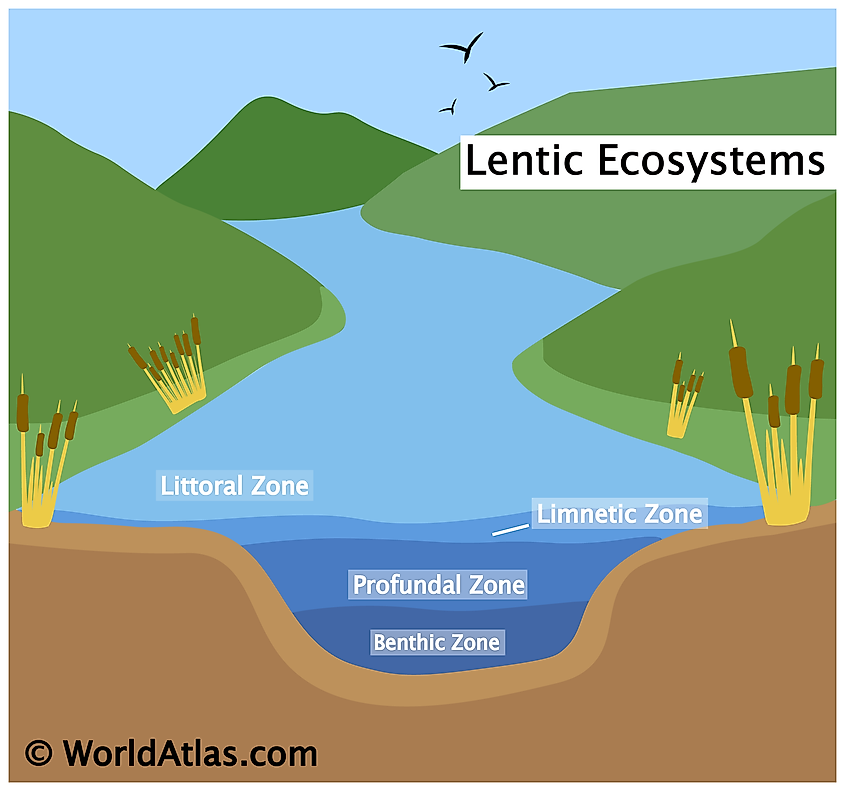
Littoral Zone
The littoral zone is the term for the shore region of a lake or pond. It includes everything around the shore or bank, from the dry land to the water’s edge. This zone can vary greatly in size or depth, depending on the location or age of the lake. This zone is typically shallow, though, and full of nutrients from runoff and inbound water sources. For this reason it is generally the zone with the most aquatic or semi aquatic vegetation such as reeds, grasses and algaes.
Limnetic Zone
The next layer is called the limnetic zone and is the surface or open water section of the lake. The limnetic zone is classified by the amount of light that penetrates the body of water. This upper water layer is also referred to as the euphotic zone, and is the part of the lake that is warmest and receives the most sunlight. Once the sunlight can no longer penetrate the lake, the zone ends. Like the Littoral zone, aquatic plants thrive in this region, due to the presence of sunlight. Oxygen levels are also higher in this section of the lake, meaning the majority of fish also live in this zone.
Profundal Zone
The profundal zone is the section that follows the Limnetic once the sunlight cannot penetrate the lake’s surface any further. The temperature in these waters is also significantly colder, as the warmth from the sun is unable to reach these depths. The water clarity and composition has a significant effect on how deep the sunlight is able to reach, and therefore the size and depth of the profundal layer will vary from lake to lake. There is also a decreased amount of oxygen in this region of the lake, so the amount of fish in this area are also significantly less.
Benthic Zone
The benthic zone is essentially the area along the floor of the lake. It consists over everything in the bottom of the body of water, including the sediment, silt, and soil which builds up at the bottom of the lake. At this lowest point, bacteria live and work to decompose and break down any organic matter which has fallen to the lake floor. Everything from deceased fish and animals to dead plants, or animal droppings. Older lakes have larger or increased benthic zones as there is a larger amount of matter to be decomposed.
Lake Layers Based On Temperature
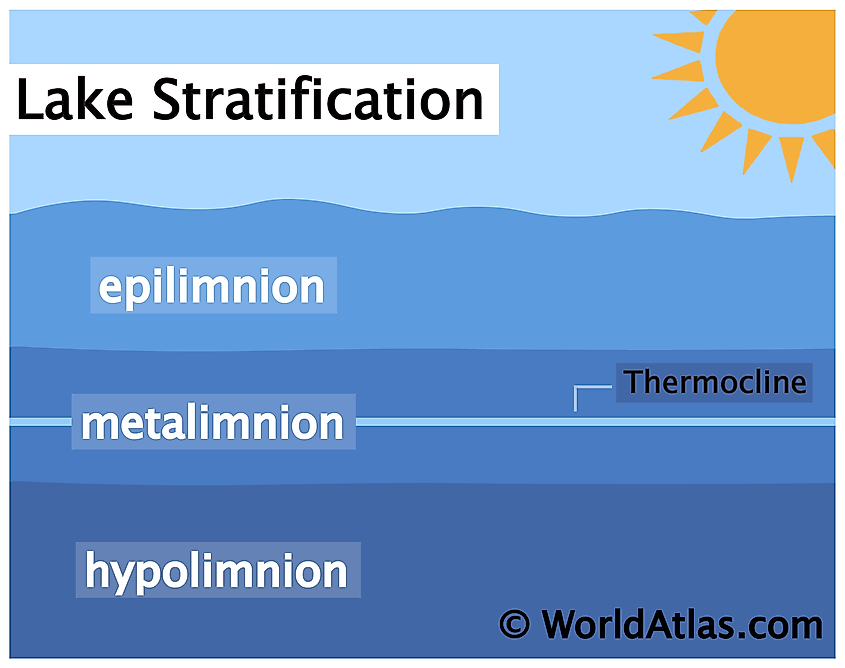
Lake stratification is the term used to describe the way lakes separate into layers based on temperature. Though related to the lake zones, this classification is strictly thermal. The change in temperature is due in part to the amount of light which can penetrate that lake’s waters. Because of this, lake density plays a key role in the temperature of the layers, and stratification more generally.
When it comes to lake stratification, there are three different categories or layers. When the surface of a lake is warmed by the sun, water density begins to change, and thus the process of stratification begins. WInd then plays a significant part in mixing the upper layer of water, creating motion for the warm water and cool water to shift. Water that is cooler is denser, and so it circulates to the bottom of the lake, while the warmer water remains closer to the surface.
The cooler water that settles towards the lake bottom becomes the hypolimnion. The top warm layer is known as the epilimnion. In between the two, the water is in constant motion, and is a mixture of the two, as the thermal changes are taking place. This layer in the middle is known as the metalimnion.
Stratification is affected by the size, shape and depth of the lake. Larger and deeper lakes tend to have greater stratification. With small or shallow lakes, wind can affect much more of the water within the lake, thereby causing the entire lake to mix and move with the wind currents.
Lake Types
The temperature of a lake can also be classified into what are known as lake types. The lake types, based on temperature, are holomictic, monomictic, dimictic, polymictic, meromictic, amictic. This thermal classification also factors in which lakes have full circulation, and which do not.
Amictic lakes are the coldest lakes, are covered in ice permanently, and as such do not experience any circulation.
Holomictic have circulation throughout at some point in a given year. This means that although it may experience freezing over, it cannot be permanently frozen, and at some point, when at a higher thermal temperature, the water within the lake completely circulates.
Dimictic lakes experience seasons. This means they have both a winter stratification below ice and a summer stratification. Circulation only occurs in these lakes during the fall and spring months.
Polymictic is the term used for lakes which undergo stratification at irregular times. This can include lakes that startify in warm climates, or in cold climates.
Meromictic lakes on the other hand, do not experience a full circulation at any point throughout the year. These lakes usually do not mix due to the presence of chemicals which make the waters hold different densities that are always separate.
The process of stratification can therefore be either seasonal, and temporary, or ongoing, depending on the climate in which the lake exists, as well as the composition of the lake itself. All of these systems of lake classification can work together in order to categorize and better understand lakes generally,but also climate and the effects of elements on various bodies of water.
From thermal classification to stratification, and the lake zone categories, all of these systems of categorizing lakes rely on the influence of external factors such as the sun, the lake’s density and composition, and the climate in which the lake sits. The continued study of lakes and the systematic classification of those lakes allows for clearer scientific research into everything from climate change to habitat conservation, weather patterns and aquatic compositions. This research furthers human’s understanding of a variety of topics, not just the specific lake being studied.






